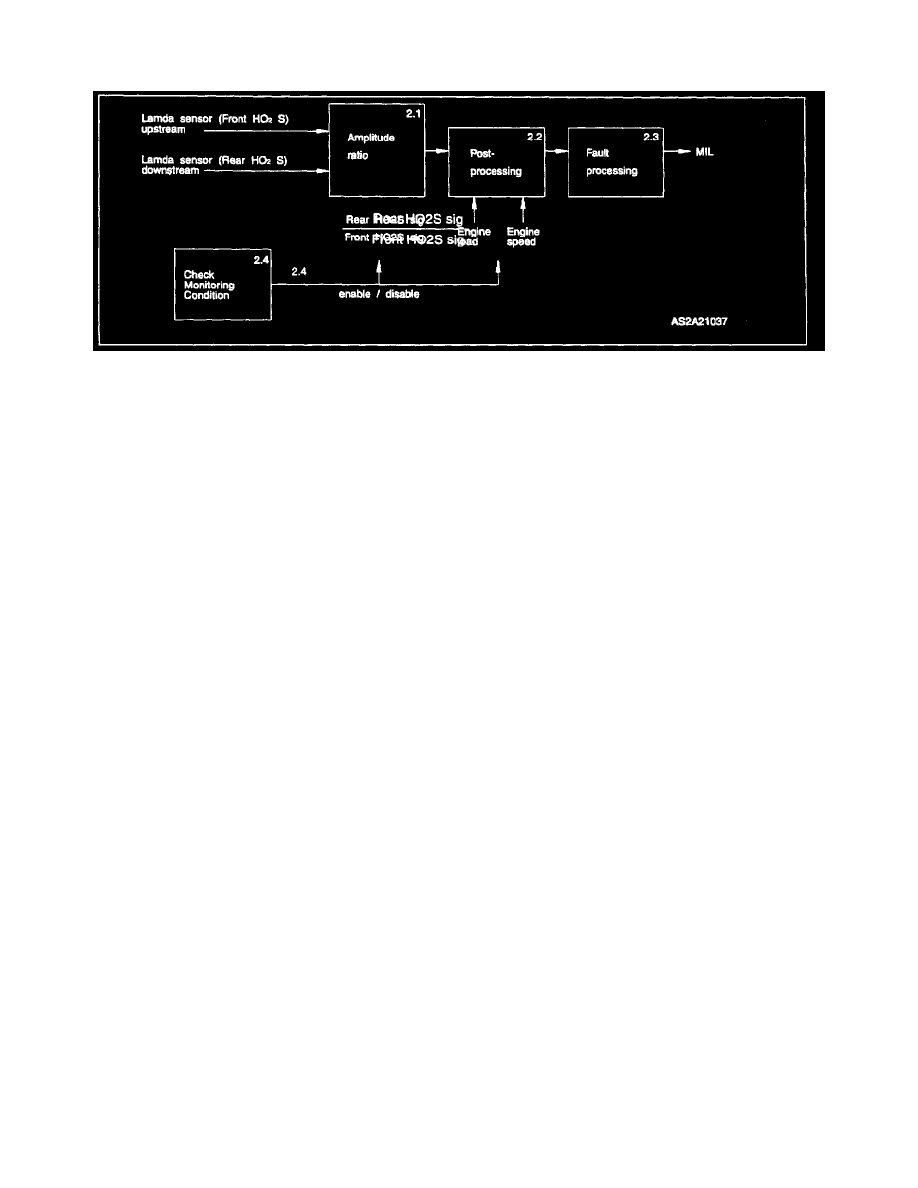Rio L4-1.5L (2001)

Catalytic Converter: Description and Operation
Three way catalytic converter (TWC) monitoring
System description
To comply with clean air regulations, vehicles are equipped with catalytic converters. These converters reduce the emissions of hydrocarbons, oxides of
nitrogen and carbon monoxide.
Normal vehicle operation or engine misfire can cause a catalyst to decay. A meltdown of the ceramic core can cause a reduction of the exhaust passage
resulting in an increase in vehicle performance and deteriorate engine performance, driveability and fuel economy.
The catalyst uses dual oxygen sensor to monitor the efficiency of the converter because as a catalyst deteriorates, its oxygen storage capacity and its
efficiency are both reduced. By monitoring the oxygen storage capacity of a catalyst, its efficiency can be indirectly calculated. The upstream (front)
HO2 Sensor is used to detect the amount of oxygen in the exhaust gas before it enters the catalytic converter. A low voltage indicates a high oxygen
content (lean air mixture) A high voltage indicates a low content of oxygen (rich mixture).
When the front HO2 Sensor detects a lean condition, there is an abundance in the oxygen in the exhaust has. A functioning converter would store this
oxygen so it can use it for the oxidation of HC and CO. As the converter absorbs the oxygen, there will be a lack of oxygen downstream of the converter.
The output of the downstream (rear) HO2 Sensor will indicate limited activity in this condition. As the converter loses the ability to store oxygen, the
condition can be detected from the operation of the rear HO2 Sensor. When the catalyst efficiency drops, no chemical reaction takes place. This means
the concentration of oxygen will be the same downstream (rear) as upstream (front). The output voltage of the rear HO2 Sensor copies the voltage of the
front HO2 Sensor. The only difference is a time lag (monitored by the ECM) between the switching of the HO2 Sensors.
To monitor the system, the lean-to-rich switches of front to rear HO2 Sensors is counted. The ratio of rear switches to front switches is used to
determine whether the catalyst is operating properly. An effective catalyst will have fewer rear switches than it has front switches, that is, a ratio closer to
zero. For a totally ineffective catalyst, this ratio will be one-to-one indicating that no oxidation occurs in the catalytic converter.
The system must be monitored so that when catalyst efficiency deteriorates and exhaust emissions increase to over the legal limit, the MIL will
illuminate.
